#Phosphorite
Text

Fossil Novembirb: Day 13
A flock of Quercymegapodius
43 notes
·
View notes
Text
Secret Santa gift for @brandenfascher's Trenton!
12 notes
·
View notes
Text


Hands down one of the best figures from any scientific paper out there, 10/10, no notes
Eocene Western European endemic genus Thaumastosaurus: new insights into the question “Are the Ranidae known prior to the Oligocene?” [PeerJ]
#science diagrams that look like shitposts#science figures#quercy phosphorites#this is on wikipedia too
7 notes
·
View notes
Text

Worm 😊😊😊😊
#um actually#It's a sedimentary marine calciumcarbonate mud with phosphorite#I love taking about rocks and minerals#But Im definitely not doing it enough#It's so cool though
0 notes
Photo

ENVIORAMA phosphorite
An environmental piece completed for Phosphorite, splash
478 notes
·
View notes
Text
Fossil Novembirb 13: French Savannah

Sylphornis by @quetzalpali-art
Whoops I got behind because life sucks but I'm back with the birds of the Quercy Phosphorites! This fossil site is another location of excellent preservation in Europe, dating to the end of the Eocene through the Oligocene. In fact, it shows a lot of how animals continued to evolve post-Messel, and has been compared to the Messel Pit extensively to look at the process of mammalian evolution in Europe!
But we, of course, are here for The Birds. This ecosystem was an open plain, not quite filled with grass as the great Grass Takeover hadn't happened yet. But it wasn't a tropical or subtropical forest like most of the world had been for millions of years by this point. In fact, the Eocene to Oligocene transition would force many animals - including birds - to deal with a more varied landscape for the first time in ages.
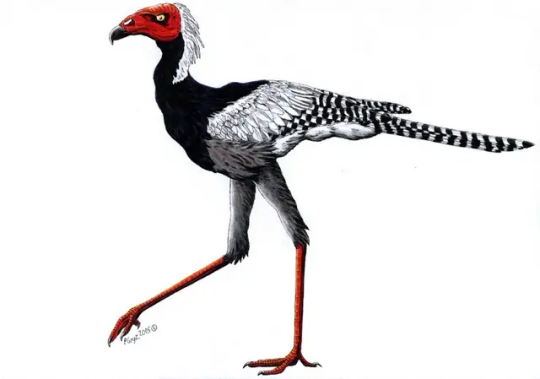
Pelargopappus by Piotr Gryz
As with other northern hemisphere ecosystems, we once again find a European locality filled with birds whose relatives live nowhere near Europe today. Pelargopappus, also known as Amphisagittarius, is one of our first known fossil Secretarybirds - and it was from Quercy! In fact, it's possible that the ecology of Secretarybirds as fast running prairie hunters may have evolved due to the decrease of forests during this time.
And it wasn't alone - the relatives of modern seriemas, like Talantatos, remained in the area as predators, and adapted well to the new environments. Along with Elaphrocnemus, it showcases that cursorial predatory birds were major factors in these early plains environments, and may have even been among the leading predators in these ecosystems. Mammalian carnivorans were only just starting to get bigger, and these growing pains allowed birds to fill some of their ancestral dinosaur niches even in Europe.

Talantatos by @drawingwithdinosaurs
Predators weren't the only birds having a grand old time in these new ecosystems. Landfowl, which were surprisingly scarce in earlier fossil records compared to their cousins the Waterfowl, begin to be more common during this time. These ground foragers, such as Quercymegapodius, had more food to pick from on the plains, and they even adapted for short bursts of flight rather than long-term flying in order to escape predators quickly on the open landscape. Relatives of seriemas adapted to herbivory, like Ameghinornis, were present too - there were a lot of grains and seeds to eat, after all!
As they evolved for this new environment, many landfowl experimented with different body proportions - such as Paraortyx, which had extremely lightweight bones, long and slender wings like those of ducks, and short legs like those of chickens. Birds like Paraortyx indicate that the evolution of living landfowl was a stepwise process, with some of the ancestral fowl characteristics sticking around in stem-landfowl such as these birds. Being able to fly well for long periods of time would have helped these birds travel through the landscape, far away from the dangers of the ground.

Paraortyx by @quetzalpali-art
Small, tree dwelling birds were present in the Quercy Savannah as well. Quercypsitta, a potential parrot relative, was a common bird in the ecosystem and may have been more like living parrots than the Parrot-Passerines of Prey we've talked about previously. Trees were still around in this ecosystem, and fighting over niches within them became difficult as all these tree birds now had to live in increasingly limited areas - which may have driven parrot relatives like Quercypsitta into diversifying further, towards the parrots we know today.
We also see early relatives of woodpeckers and barbets! Sylphornis had legs and feet weaker than those of Passerines, but very similar to living woodpeckers. With long slender legs and zygodactylus feet, it was able to perch on the trees effectively and hold onto them while searching for food, a helpful adaptation in an increasingly competitive world. Modern-type birds of prey were beginning to appear as well, with hawk-like animals such as Horusornis showing up more frequently in the fossil record as these open habitats appear. Like living birds of prey, Horusornis probably took advantage of the large landscape to search far and wide for sources of food.
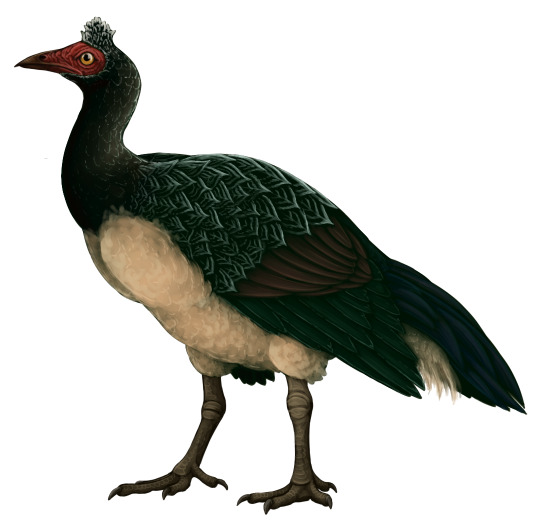
Quercymegapodius by @drawingwithdinosaurs
Wading birds like Itardiornis were also present, though what sources of water they were feeding along is less clear. As terrestrial omnivores, they probably went from water source to water source, searching for anything they could eat in the savannah landscape. Relatives of avocets were also present, indicating probing around in the substrate was something many animals could benefit from in the plains.
The only fossil Toadie is known from Quercy, Palaeotodus, and while they were similar in terms of morphology, they were significantly larger than living toadies with much larger wings proportionally. This probably would have helped these birds go longer distances across the fragmenting landscape.
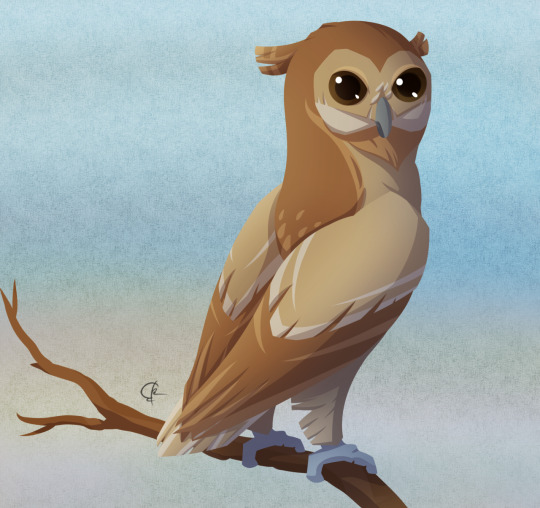
Palaeoglaux by @quetzalpali-art
Owls continued to adapt to the changing landscapes, competing with new diurnal raptors for niches as these forms began to appear. Palaeoglaux, known from the Messel, was still present in the Quercy Phosphorites, and was probably still diurnal as its earlier form had been, as it had visible display structures. Strisorians were common too, with relatives of nightjars like Ventivorus, potoos like Euronyctibius, and frogmouths like Quercpodargus all present in the ecosystem. This shows that, even as the world cooled, it wasn't quite cold enough for these now-tropical birds to disappear from Europe... yet.
Sources:
Mayr, 2022. Paleogene Fossil Birds, 2nd Edition. Springer Cham.
Mayr, 2017. Avian Evolution: The Fossil Record of Birds and its Paleobiological Significance (TOPA Topics in Paleobiology). Wiley Blackwell.
32 notes
·
View notes
Photo

Gay Juice - Dew Edition
Forest dragons also enjoy the refreshing taste of Gay Juice™
Gay Juice™ - Made from all natural ingredients
(Slot No. 6 for Phosphorite)
Posted using PostyBirb
6 notes
·
View notes
Text
Chapter 211 Trivia
Try not to choke, dear Ryusui…

Going by the map and the several smaller islands, the KoS seems to have landed in South Kalimantan on the island of Borneo. The mountains in the background could be the Meratus mountains.
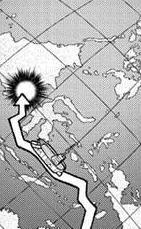

Indonesia is the world's second largest producer of rubber. The largest is Thailand which, geographically, isn't that far away, but it produces much less rice. This is probably why Indonesia was chosen for Rubber City instead.

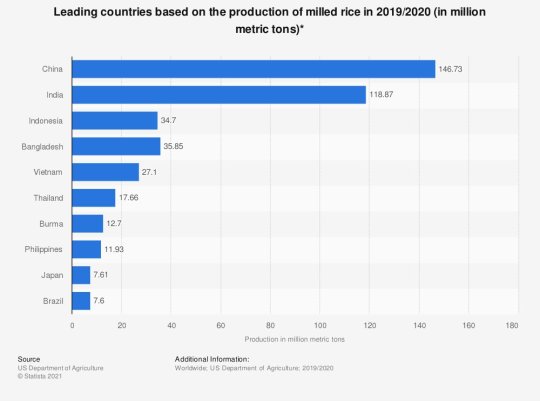
It's been 10 years since the KoS began the world tour:
-September 5741, Perseus completed
-January 5742, ground zero
~February, petrified for 7.5 years
-October 5750, arrive in India
-April 5751, arrive in Indonesia
-120 days for rice to grow, so it's around July/August.




It's a shame we didn't see traditional Australian dishes such as Vegemite, fairy bread, kangaroo meat…
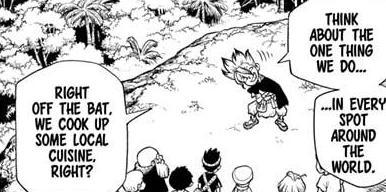
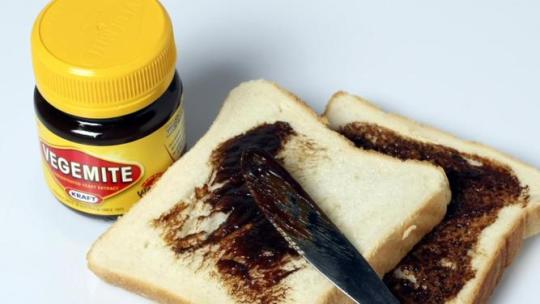
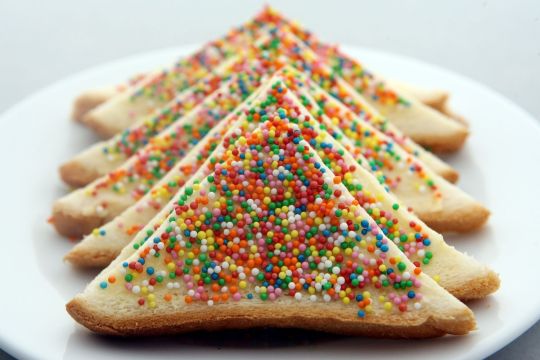
Rice grows from seed to harvest in ~120 days, so Indonesia can have 3 growing seasons. The most important one is the wet season from October to December, which is harvested in March & April. This is ~45% of total rice production for the year, which is the one the KoS harvested.

Character development.
(Gen finally tied up his cloak to stop it getting wet.)
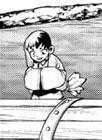
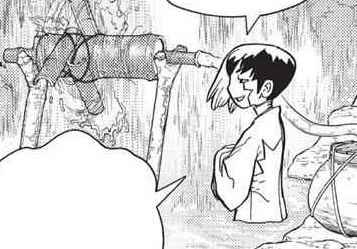
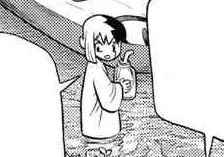
There's a lot of rice-based food in this image, so here's a few I've identified in case you need ideas for dinner.
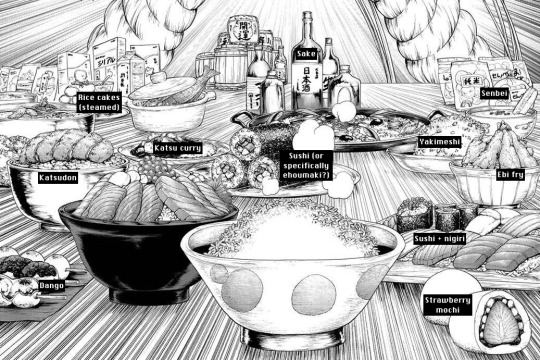
Chrome and Suika are surveying the land, presumably plotting (rice) paddies. Chrome is using a theodolite, which is used to measure angles on the horizon. Suika is probably measuring distance with the rope as extra data for their calculations.


Sai's lesson seems to be proving Heron's formula using Pythagoras' theorem.
We can also see that Chrome's handwriting has improved since the last time he had to calculate the properties of triangles!
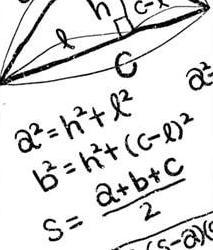
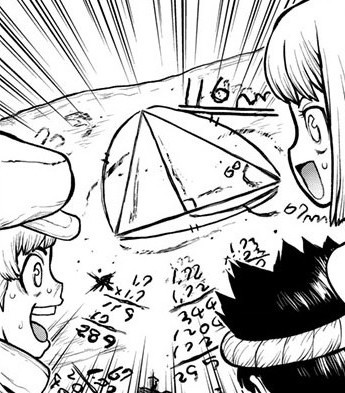
The device Kaseki built is an Archimedes' screw, which can be used to lift liquids or sand-like mediums upwards onto higher levels. In this case, it's being used to fill the rice paddies.
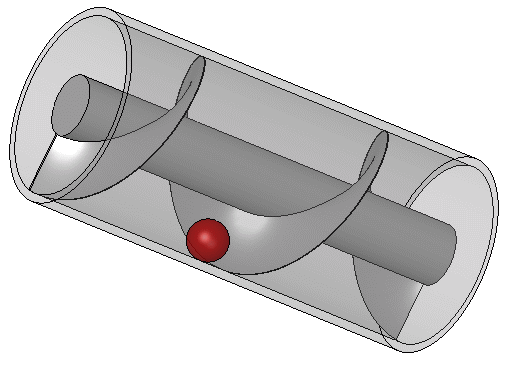
The mobile lab is truly one of the most valuable and hardworking members of the Kingdom of Science.

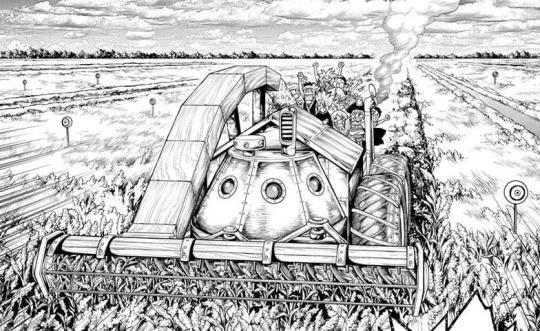
Nauru is one of the three great phosphorite islands in the Pacific Ocean, though thanks to too much mining in the last hundred years, the resource is almost completely depleted.
The prevalence of phosphorite is due to the albatross droppings, as Ukyo said.


When Yo said they took a pit stop, this is likely the route they took.

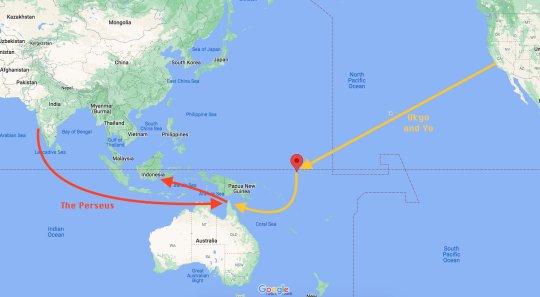
Fertilizer has 3 primary nutrients that help most plants to grow:
-Nitrogen, from the nitric acid
-Phosphorus, from the phosphorite
-Potassium, from the wood ash (this also has calcium carbonate, which, as we all know, has at least 4 uses.)

Rice has many different variants such as Japonica ("from Japan") and Indica ("from India"). Indica rice tends to be thinner and longer, and includes basmati and jasmine.
Amylopectin is a component of starch, and is what allows rice to stick to itself (necessary to make onigiri).
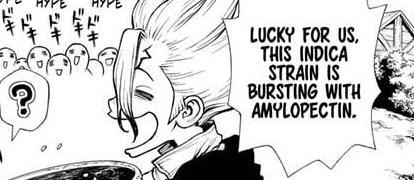
12 notes
·
View notes
Text
Phosphorite! Fusion of Peridot and Spinel

I don't ship them! I was just wondering what their fusion might look like.
And I was inspired by one of these fidget toys like Tangle
I was just imagining what it could be like for a Spinel X"))
And, of course, Peridot would be good for something this funky style.
So here she is !!!!
Bonus :

And of course - Phosphorite is PHOSPHORIT. She can glow in the dark
(there's a reference in the corner that I used to draw it ahahahah)
6 notes
·
View notes
Text
im running our of phosphorite in oxygen not included and i feel ill
#no dreckos. expand bammoth ranch? not enough ethanol!#i need to expand farming AND food preservation#actual hell#BUT. im on cycle 317 with 4% stress so thats nice#i am however at 40% stress thinking about how much ethanol i need
0 notes
Text

corriere this night rightly right again.. many interesting the association with soccer... let's see too fosforogeno~fosforite~phosphorite... bye... joe...
0 notes
Text
0 notes
Text

Art trade with the ever-wonderful @zinthings– of their gnoll character Iniko, jumpiing into action!
11 notes
·
View notes
Photo

All perfect size is just what I wanted arrived on time. Color just like in the photo phosphorite.
Access this link
0 notes
Text
Goals for writing D&D stuff last night (despite crown falling out):
Figure out what the last member of a party was going to be - I knew that they are going to be:
A Warforged
A non-military background - Some sort of manual labourer, most likely
A prisoner that had been part of a guerilla cell after their homeland was conquered
Should be a martially-inclined/somewhat tankier class, to balance out the mages on their team a bit
Once I figure out what I want to do, match them to a dice set, and start organizing things
Copy my notes from my phone about all I've pictured for them so far
Do this all rather quickly, then get into playing some more of the Powerwash Sim DLC or working on the digital puzzle I'm getting close to finishing.
What ended up happening:
Looked at list of Warforged characters I've created previously for ideas, noticed there's a few classes that I haven't used for Warforged yet - Perfect jumping-off point
Paladin's among them - Would be great for a tank, but also not really lending itself to the non-combatant background I was hoping for
Ranger is also one that I haven't used - And a couple of ideas spring to my head immediately
Bard, Sorcerer, and Wizard haven't got one yet - But there's already so many mages in this group of characters
Nevertheless, an idea for a Lore Bard pops into my head
Spend a bunch of time formalizing in my notes the overall timeline and terminology relating to Warforged in my world
Determine which of my existing Warforged characters fit into which "subrace"
Get a whole bunch of worldbuilding stuff officially written down/coordinated and put a pin in a bunch of stuff to reconcile (it happens when you write everything piecemeal, after all)
Circle back to the paladin - Idea has emerged, just not for this group. Write it all up any way - Easier than trying to remember it all any way, and if I'm making notes, might as well just write it down formally
Oath of Redemption - A former Imperial Tax Collector who avoids killing because dead people are kind of hard to get back-taxes out of.
Also, it's not her job to be executioner. Doesn't want to overstep
Basically - A take on Redeemer that's not "I must atone for my horrible crimes, I swear off lethal violence!" and also not "I'm a goody-two shoes who refuses to kill" - As a fun idea/experiment. I really like how her flavour has shaken out, tbh
Dice set (Gold-Coloured, naturally) and name (Electrum) picked out, more work put into the actual character sheet than I was planning initially - Again, easier to just get it done.
Okay - Ranger, then:
Swarmkeeper is intriguing - But what sort of peaceful manual labourer background could I tie back into that?
I mean, the obvious one is beekeeper - But I have that earmarked for a Dwarf meadery worker's background (If you're gonna have so much mead, you need someone to watch over the bees to make the honey) - And while it'd probably be fine to have two rangers with that background, I do prefer trying to change things up, y'know?
So, if not that - What? Weasels? - Well, the spectral swarm is supposed to fly around - and yeah, spirits, but maybe something different.
Birds? Eh... What kind of birds would be kept for some sort of purpose, but still swarm?
Bats? Well that'd probably word, but it's not like people keep bats. In fact, the only thing I could think of that humans use bats for is guano.
Hold on - There's an idea there. Mining/collecting guano is a pretty unpleasant job. The kind of job you'd give to a mechanical worker who lacks a sense of smell if you could, right?
Okay, so what if this Warforged guano collector was in a cave when [magical apocalypse thing] happened and the bats in the cave with them kind of bonded to their soul because of this event?
Excellent! Let's go with that!
Name: Phosphorite (for the phosphorus in the guano); Dice Set: Glow in the Dark (because of phosphorescence)
Great, print it! Except... This isn't really the right vibe for the Warforged prisoner.
The Lore Bard is not the prisoner I was writing. Could have fit certain parts, but I'm too attached to the idea of the ranger that was a manual labourer now
He's instead a helpful guide from library - Lots of knowledge of all sorts of things, handy utility-bot, etc.
Okay, so the prisoners' group now has this guy in it too.
His familiarity with certain things is going to make him actually kind of relevant when it comes to the ruins the crew was being used to clear - Might have a good ability to generate plot hooks because he could possibly understand some of the archaeological things here!
Name: Lazurite (Lapis' mineral, associate with knowledge). Working on picking a set of dice. Likely will be blue with gold flakes.
Finally, finally circling back to the other Ranger again
This one is probably the right fit for the prisoner character I initially had in mind
Beastmaster ranger, was a shepherd before the war broke out
Still has those shepherd "protect my herd/flock" instincts, and that's why they stay with the resistance fighters, despite their distaste for fighting.
What minerals are associated with shepherds or animal husbandry in any way, though? (Minerals as names is the running theme for the Warforged characters)
There's apparently a "mutton fat" jade - Mineral it's made of is Nephrite. Cool, that works for me - As a ranger I'm already inclined to pair them with green dice.
Nephrite reminds me of Nefertiti, as far as names go. Sure, this one will lean female, inasmuch as gender is a thing for Warforged anyway
Yes, I'm aware that the name relates to kidneys because of the magical properties jade was thought to have and all - But still, it works. I'm good with this. Just got to find an appropriate set of dice for her too, and I'll have it all sorted!
Oh also - If she's a beastmaster, what exactly is her beast going to be like - Have to figure that bit out still too.
Still working on getting those last two dice sets determined
Had a couple of breaks in there to deal with my tooth and have lunch.
But, uh, for starting at like, midnight last night, and still not getting to the end of my goal by 12:30 pm, feels like I kinda meandered a bit.
(And yes, I did spend quite a lot of time typing all this up here too)
This is what it's like to write when you're me - Seized by bursts of creativity, but you have no control where they're gonna take you.
1 note
·
View note
Text
So, looking into shit, finding that phosphine is more of an organic deal than anything (specifically it apparently in nature is most commonly a result of phosphates in organic matter breaking down during decay) and so unlikely to be found in a rock, stretching out because now I've got to poke firestone a bit.
I don't blame Anne, she probably got mixed up with thinking about phosphorous- which combusts like a son of a bitch- and just pulled a wrong name and rolled with it, but I have access to more information than her and don't play that game as much as I probably should.
What she should have been looking at was phosphate, the naturally occurring form of phosphorous. Most commonly found in phosphate minerals such as phosphophyllite, apatite, skorpionite, etc.
Presumably firestone and flamestone are either differing varieties of phosphate rock/phosphorite (rock with high levels of phosphate minerals) or are themselves phosphate minerals either unknown on Earth or simply obscure enough to not have been identified by the commonfolk who were working with them (so, pretty much anything but turquoise).
Unfortunately if we ever get a description of firestone I can't find it (it's probably in Dragon's Fire but I don't have access to it at the moment so...) and as a result can't really give you anything more exact than that as far as what firestone and flamestone might actually be.
What I can tell you is that we're likely looking at whatever acid is in the dragonkin's second stomachs reacting breaking down the phosphate minerals and then reacting with the now loose phosphorous and possibly the other elements in the 'stone to create one of some variety of phosphorous compounds that retain combustibility on contact with oxygen.
1 note
·
View note